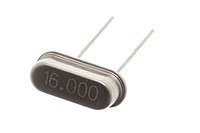
Photo from wikipedia
The effect of relevant factors on the magnetic properties and structures of FeCuNbSiB nanocrystalline alloy in the tensile stress process was investigated. The continuous annealing apparatus was designed to control… Click to show full abstract
The effect of relevant factors on the magnetic properties and structures of FeCuNbSiB nanocrystalline alloy in the tensile stress process was investigated. The continuous annealing apparatus was designed to control the tensile stress, annealing temperature, isothermal time, heating rate, and cooling rate. Different levels of relevant factors were performed on the ribbon samples using orthogonal experiments designing and then studied by simple variable controlling. To compare the DC tolerance property, the DC-bias field H 0.98 is defined. The results show that during annealing the above relevant factors significantly affects the magnetic property including the DC-bias field and core loss. It is observed that the DC-bias field H 0.98 and the unit weight core loss of alloy P m reach the optimum value in 570 and 590 °C and subsequently deteriorate with the increasing annealing temperature. The DC tolerance property is proportional to the tensile stress and when the tensile stress increasing up to 94 MPa, the DC-bias field H 0.98 shows a linear relationship with tensile stress. On the other hand, the DC tolerance property is negligible corresponding to the tensile stress smaller than 94 MPa and conversely, the core loss of alloy decrease significantly. The DC-bias field H 0.98 of annealing samples exhibit a comparably stable value in the time range of 90 s to 900 s. In addition, the core loss P m shows a similarly linear decreasing function with isothermal time from 20 to 900 s. Based on the results, the DC-bias field H 0.98 is more than 3500 A/m when the tensile stress exceeds 230 MPa and the unit weight of core loss P m is about 63 W/kg corresponding to f = 100 kHz and B m = 300 mT when the isothermal time is 900 s, respectively. Analysis with magneto-optical Kerr microscopy reveals that the width of magnetic domains decreases with an increasing tensile stress and annealing temperature. Besides, when the isothermal time exceed 480 s, the magnetic domain wall shows a transformation from perpendicular to parallel to the direction of magnetization. In addition, the relationship between magnetic properties and relevant factors in the tensile stress process is discussed.
Journal Title: Journal of Materials Science: Materials in Electronics
Year Published: 2020
Link to full text (if available)
Share on Social Media: Sign Up to like & get
recommendations!